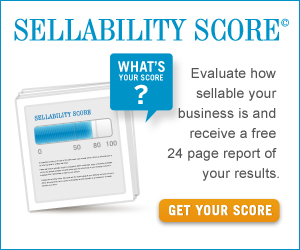Republished with permission from Built to Sell Inc.

Photo by: Republic of Korea licensed under Creative Commons Attribution 2.0 Generic
With the Sochi Olympic Games taking place this month, it is interesting to reflect back on some of the big events of the 2010 Olympic Games in Vancouver.
In the Men’s Downhill race at Whistler, for example, the winning time of 1:54:31 was posted by Didier Défago of Switzerland. The time among medalists was the closest in Olympic history, and while Mario Scheiber of Austria posted a time of 1:54:52 – just two tenths of a second slower than Défago – he finished out of the medals in fourth place.
In ski racing, one fifth of a second can be lost in the tiniest of miscalculations. And when it comes to selling your business, markets can be equally cruel. Get everything right, and you can successfully sell your business for a premium. Misjudge a couple of minor details and a buyer can walk, leaving you with nothing.
Here is a list of six little details to get right before you put your business on the market:
- Find your lease. If you rent space, you may be required to notify your landlord if you intend to sell your company. Read through the fine print and ensure you’re not scrambling at the last minute to seek permission from your landlord to sell.
- Professionalize your books. Consider having audited financial statements prepared to give a buyer confidence in your bookkeeping.
- Stop using your company as an ATM. Many business owners run trips and other perks through their business, but if you’re planning to sell, these treats will artificially depress your earnings, which will reduce the value of your company in the eyes of a buyer by much more than the value of the perks.
- Protect your gross margin. Oftentimes, when leading up to being listed for sale, companies grow by chasing low-margin business. You tell yourself you need top-line growth, but when an acquirer sees your growth has come at the expense of your gross margin, she will question your pricing authority and assume your journey to the bottom of the commoditization heap has begun.
- If you’re lucky enough to have formal contracts with your customers, make sure your customer contracts include a “survivor clause” stipulating that the obligations of the contract “survive” the change of ownership of your company. That way, your customers can’t use the sale of your company to wiggle out of their commitments to your business. Have a lawyer paper the language to ensure it has teeth in your jurisdiction.
- Get your Sellability Score. Take 13 minutes to answer the Sellability questionnaire now. You’ll see how you performed on the eight key drivers of sellability and you can identify any gaps you need to fill before taking your business to market.
Like competing in the Olympics, selling a business can be an all-or-nothing affair. Get it right and you will walk away a winner. Fumble your preparation, and you could end up out of the medals.
Why not find out now if your business is sellable?
This free online tool is the only no-risk step you can take to determine if your business is ready to get full value. Fast-track your analysis by taking advantage of this free, no-obligation free online tool.
This Sellability Score you instantly receive is a critical component to any business owner’s complete financial plan and is something that, until now, we have only made available to existing clients.
However, we recognized that there is value in knowing in advance of working with a financial planner whether or not your largest asset is ready to be exchanged for your retirement nest egg. Our view is that you are better to learn more about your businesses sellability today and find out how your business scores on the eight key attributes so that you can ensure you obtain full value.
If your business part of your retirement plan, finding out your sellability score will be the best 10 min. you could ever spend working “on” your business.
Take the Quiz here: The Business Sellability Audit
 For more free information on Creating A Business Owner’s Dream Financial Plan, you can listen to a free, eight part series we did exclusively for business owners. The show is also available to subscribe to for free via iTunes.
For more free information on Creating A Business Owner’s Dream Financial Plan, you can listen to a free, eight part series we did exclusively for business owners. The show is also available to subscribe to for free via iTunes.













